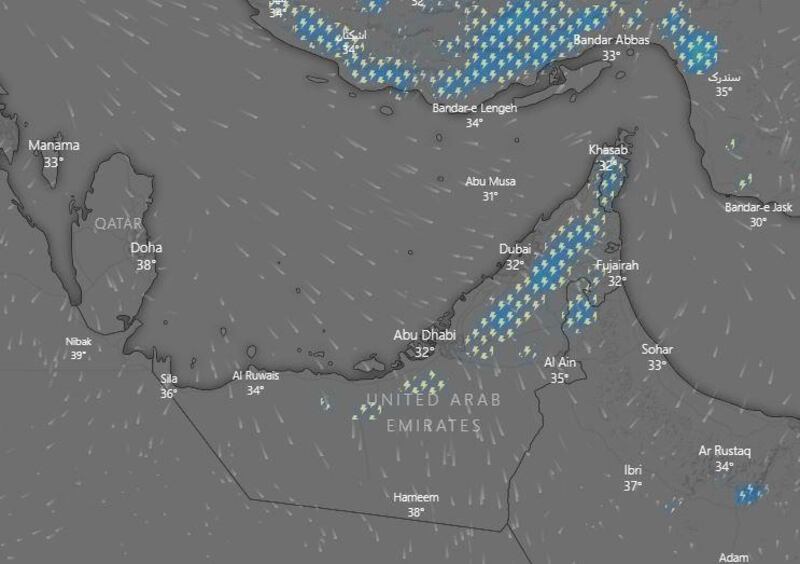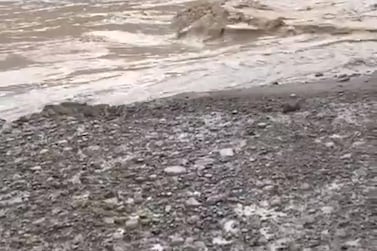Thundershowers accompanied by hailstorms lashed the northern and eastern regions of the UAE on Thursday evening flooding stretches of roads and filling up wadis.
The National Centre of Meteorology issued an alert cautioning people to be aware of bad weather conditions through the evening.
The rain caused flooding on motorways leading to towns including Hatta and Khorfakkan and created mini waterfalls on nearby rocky hills. Residents posted videos of themselves scooping pebble-sized hailstones from the side of the road, on social media.
الإمارات: امطار رعدية مع تساقط البرد حاليا في حتا #مركز_العاصفة #أخدود_سهيل
— مركز العاصفة (@Storm_centre) October 10, 2019
10 اكتوبر 2019 pic.twitter.com/9VhVYXl0kE
The bureau shared videos of water gushing through the wadis near Masafi, Khorfakkan and Ras Al Khaimah, warning that heavy rains were expected to continue.
Hail and heavy rain was even reported in Al Ain and downpours are expected to continue throughout the weekend.
Authorities routinely caution residents against driving to valleys to watch the rain, for fear they get swept away by flash flooding.
The winds of up to 40kph whipped up dust and reduced visibility in coastal and hilly areas of the country.
This week, a sudden storm caused flooding across Dubai. Drivers were forced to contend with low visibility and hazardous road conditions as pools of water formed on highways throughout the emirate.
How does hail form in the summer?
It may seem like an unlikely pairing, but hail can be common to countries that fall between the Tropic of Cancer and the Tropic of Capricorn during the summer.
This is because surface temperatures are warm enough to promote the instability associated with strong thunderstorms but the upper atmosphere is still cold enough to support ice.
Hail forms when strong currents of rising air, known as updrafts, carry water droplets high enough that they freeze.
A particularly strong updraft can allow the hailstones to grow large enough that they do not melt by the time they fall back and reach the ground.
Once they grow large enough to begin falling, the can drop as fast as 140kph, causing some damage when they land.






